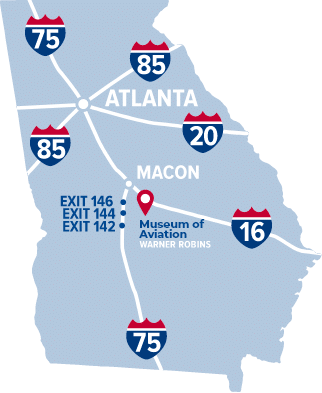The C-46 was developed from the new and unproven commercial aircraft design, the CW-20, which first flew in March 1940. Deliveries of Army Air Forces (AAF) C-46s began in July 1942. During WWII, the AAF accepted 3,144 C-46s for hauling cargo and personnel and for towing gliders. Of this total, 1,410 were C-46Ds. The C-46 gained its greatest fame during WWII transporting war materials over the “Hump” from India to China after the Japanese had closed the Burma Road. C-46 flights on this treacherous air route over the Himalayas began in 1943. The Commando carried more cargo than the famous C-47 and offered better performance at higher altitudes, but under these difficult flying conditions, C-46s required extensive maintenance and had a relatively high loss rate. In Europe, C-46s dropped paratroopers during the aerial crossing of the Rhine River near Wesel in March 1945. C-46s saw additional service during the Korean conflict and in the early stages of the Vietnam War.
Warner Robins Air Logistics Center provided logistics support of C-46s in the southeast during WWII and after the war took on responsibility for all USAF C-46s until their retirement in the 1960s. The Museum’s C-46 was delivered to the AAF in October 1944 and was sent to the Pacific and the 20th Air Force. It was sold in 1946 to the Government of India and later resold to various commercial operators until it was acquired and flown to the Museum in 1991.








